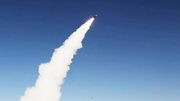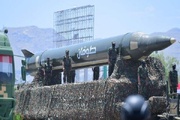According to claims from Chinese media, the material, created by the National University of Defense Technology, is designed to absorb electromagnetic waves and convert them into heat, a process that may significantly reduce the aircraft’s radar visibility.
The new material is said to be able to absorb electromagnetic waves with wavelengths ranging from 2.3 feet to 0.6 feet, which covers the key frequencies of most anti-stealth radars, specifically the P-band and L-band.
Chinese researchers said that laboratory tests have shown the material’s ability to effectively absorb low-frequency electromagnetic waves from various angles, with a thickness no greater than two sheets of printing paper—an achievement considered impossible until now.
Anti-stealth radars typically emit long-wavelength electromagnetic signals, which are difficult for current stealth aircraft coatings to absorb effectively due to their thinness.
The report said that the new material could mark a breakthrough in overcoming this limitation, potentially offering stealth aircraft enhanced protection against radar detection.
The material is also described as lightweight, flexible, and easy to mass-produce, making it an attractive option for covering a range of military platforms. Chinese scientists believe this cost-effective material could evolve the production of stealth technologies for aircraft and other defense equipment.
This new material is based on metamaterials—structures engineered to interact with electromagnetic waves in unconventional ways. Metamaterials are known for their ability to absorb a wide range of frequencies and manipulate light and other waves at a microscopic level.
Researchers used an unidentified metal to create a circuit within the material. When hit by low-frequency electromagnetic waves, the circuit creates currents that are converted into heat and dissipated into the surrounding air.
MNA/
























Your Comment